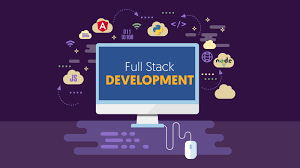Welcome to our comprehensive guide on building your first fullstack application using the LAMP stack. Whether you're a beginner or an experienced developer looking to brush up on your skills, this guide will walk you through the entire process, from setting up your environment to deploying your application.
What is LAMP?
LAMP is an acronym for a set of open-source software used to run web servers:
Linux: The operating system.
Apache: The web server.
MySQL: The database management system.
PHP: The server-side scripting language.
Setting Up Your Environment
Install Linux: If you don't have Linux installed, you can use a distribution like Ubuntu.
Install Apache: Use the command sudo apt-get install apache2.
Install MySQL: Use the command sudo apt-get install mysql-server.
Install PHP: Use the command sudo apt-get install php libapache2-mod-php php-mysql.
Creating Your First Application
Setting Up the Project Directory: Create a directory for your project in the Apache root directory, usually /var/www/html.
Connecting to the Database: Create a MySQL database and a user. Use PHP's mysqli or PDO to connect to the database.
Creating a PHP Script: Create a PHP script that connects to your MySQL database and retrieves data.
php
Copy code
connect_error) {
die("Connection failed: " . $conn->connect_error);
}
$sql = "SELECT id, name FROM users";
$result = $conn->query($sql);
if ($result->num_rows > 0) {
while($row = $result->fetch_assoc()) {
echo "id: " . $row["id"]. " - Name: " . $row["name"]. "
";
}
} else {
echo "0 results";
}
$conn->close();
?>
Building the Frontend
HTML: Create an HTML file to display your data.
CSS: Add CSS to style your HTML.
JavaScript: Use JavaScript to add interactivity.
Deploying Your Application
Testing: Ensure your application works locally.
Configuring Apache: Set up virtual hosts if necessary.
Going Live: Upload your project files to your server.
Building a fullstack application with LAMP is a rewarding experience. This guide covered the basics, but there's much more to learn. Continue exploring and enhancing your skills to become a proficient fullstack developer.
info@gladsme.in
+91.8891968718
Building Your First Fullstack Application with LAMP: A Comprehensive Guide
Building Your First Fullstack Application with LAMP: A Comprehensive Guide

Related Blogs

The Importance of Data Structures in Software Development
Read More...
Exploring Machine Learning Algorithms: A Beginner's Guide
Read More...
The Evolution of Programming Languages: From Assembly to Rust
Read More...
Understanding Big O Notation: A Guide for Developers
Read More...Subscribe for our Newsletter
Subscribe to elevate your software game! Stay updated on the latest trends, coding insights, and exclusive promotions with our newsletter.
